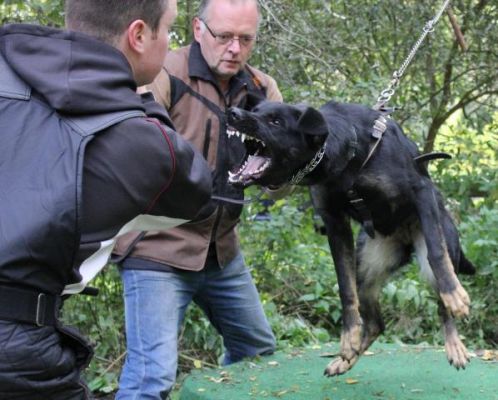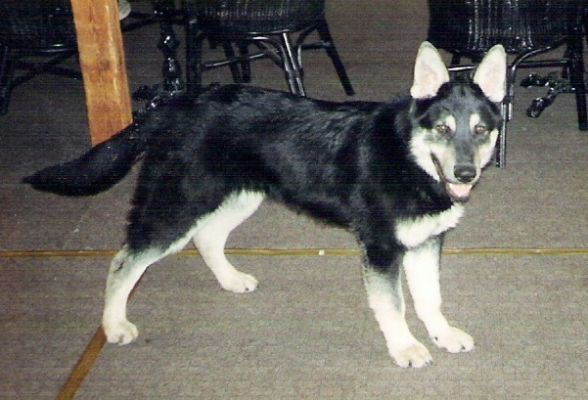
This is a placeholder text
Group text
by mfh27 on 19 May 2013 - 22:05
Below is her sister, Debby. Mom is sable carrying black; dad is bicolor or black and tan and carries black. I have a hard time calling Debby anything but bi color. Which would make Ella bi color.


by mfh27 on 19 May 2013 - 22:05
by GSD Lineage on 19 May 2013 - 23:05
by Elkoorr on 20 May 2013 - 00:05
The girl I still have from my litter, Avanna, maybe carrying bi-color as well. She herself is sable. I assume this as she is different in a few ways then the other girls were (structural more masculine and large, coat type very rough to touch and different markings than her littermates) This was also the pup who had the "brindle" looking striping at birth. I tested her on the k-locus which was negative for brindle but positive for sable ky. Did not test her on the a-locus though.
by Elkoorr on 20 May 2013 - 01:05
by AmbiiGSD on 20 May 2013 - 13:05
by Jenni78 on 20 May 2013 - 14:05
by darylehret on 20 May 2013 - 14:05
We have previously established that penciling and tarheels are not exclusive to sables that carry black. As example, Galant z Pohranicni straze and Zidane v h Sevens have those markings, but are not black carriers.
Could be that bicolor is just a less dominant degraded strain of the tanpoint allele, just as tanpoint (black/tan) alleles are just a mutated and less dominant variation of the wild type (sable) alleles. The basic principle that; "All agouti variants are due to mutated sable alleles" also allows the presence of "patterned sables" to be less confounding. Therefore, I find the notion that there could exist a precisely defined bicolor phenotype to be a pointless affair, considering that the genotype involved is a matter of fuzzy difference. Basically, the most degraded functional allele holds the least dominance in phenotypic expression.
Family strains of similar patterns sometimes have very distinct differences from those of other families. REMEMBER: alleles are not atomic elements, and should not be expected to be uniformly identical to one another. The dark sable Anrebri dogs are very distinct from the dark sable Haus Iris dogs. Black dorsal and ventral stripes of sables are controlled from the agouti locus, yet some have black ventral stripes, and some do not. Some saddles extent more than others, some blankets extend more than others. Molly's bicolors differ from other near variations, so she exempts them from her definition of "true bicolor". I'd say, give her the exclusive, and just put it to rest.
by Elkoorr on 20 May 2013 - 15:05
Axel von der Gartenklause

by darylehret on 20 May 2013 - 16:05
Contact information Disclaimer Privacy Statement Copyright Information Terms of Service Cookie policy ↑ Back to top




